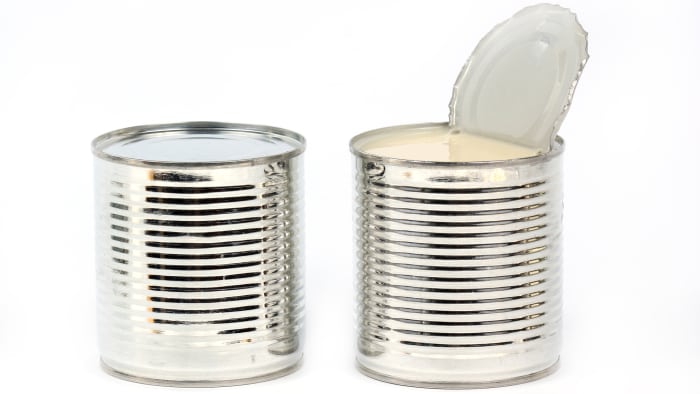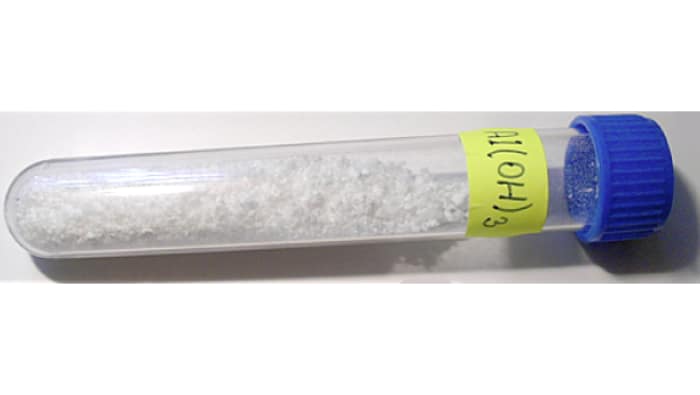How hydrochloric acid reacts with aluminum. Formulas and description of the process
Features of hydrochloric acid and aluminum interaction

Aluminum is a malleable, light, silvery-white metal. It is a good electrical conductor. It can react with both acids and bases. Combining aluminum with an acid results in a typical single displacement reaction, forming aluminum salt and gaseous hydrogen. This can be seen from a simple example – how hydrochloric acid reacts with aluminum.
With alkalis, the reaction proceeds differently: in addition to a hydrogen release, the reaction forms MeAlO₂ aluminate (where Me is the cation of a metal from the alkali) and a complex compound with the formula Me[Al(OH)₄] in the solution.
How aluminum reacts with hydrochloric acid
Aluminum reacts with diluted hydrochloric acid at room temperature. The metal dissolves in hydrochloric acid, yielding aluminum chloride and colorless hydrogen gas. This reaction is irreversible, as the final products will not react with each other. The reaction between metallic aluminum and hydrochloric acid is what is known as an oxidation-reduction reaction. Aluminum acts as the reducing agent, giving up electrons:
Al⁰ - 3e = Al³⁺
Cations of hydrochloric acid take these electrons and are reduced to molecular hydrogen:
2H⁺ + 2e = H₂
The complete ionic reaction equation reads:
2Al⁰ + 6H⁺ + 6Cl⁻ = 2Al³⁺ + 6Cl⁻ + 3H₂↑
Net-ionic form:
2Al⁰ + 6H⁺ = 2Al³⁺ + 3H₂↑
In molecular form, the reaction looks as follows:
2Al + 6HCl = 2AlCl₃ + 3H₂↑
Metallic aluminum is not the only substance capable of reacting with hydrochloric acid – many metal compounds possess this property. An exchange reaction occurs with the salts, when ions or reactive groups of both reagents “change places.” In order for the reaction with aluminum or its compounds to be irreversible, the reagents must form a gas, a precipitate, or a poorly-soluble substance. The necessary reagent quantities must be calculated with precision.
Reactions of aluminum hydroxides and oxides with hydrochloric acid
Al(OH)₃ is an amphoteric base, which is a white jelly-like precipitate that dissolves poorly in water.

Aluminum hydroxide enters into a neutralization reaction with hydrochloric acid (the hydroxide must be freshly-precipitated for the reaction to proceed reliably):
Al(OH)₃ + 3HCl = AlCl₃ + 3H₂O
One can observe the dissolution of the white precipitate of aluminum hydroxide (aluminum chloride AlCl₃ dissolves well in water). With aluminum oxide, the reaction yields salt and water according to the following equation:
Al₂O₃ + 6HCl = 2AlCl₃ + 3H₂O
Reactions of salts, hydrides, and aluminum complexes with hydrochloric acid
Hydrochloric acid also reacts with many other aluminum compounds.
With aluminum carbide
Al₄C₃ + 12HCl = 4AlCl₃ + 3CH₄↑
(aluminum carbide dissolves when treated with an excess of hydrochloric acid)
With aluminum acetate
(CH₃COO)₃Al + 3HCl = AlCl₃ + 3CH₃COOH
With aluminum nitride
AlN + 4HCl = AlCl₃ + NH₄Cl
(hot concentrated acid is used; the reaction takes place slowly)
With aluminum sulfide
Al₂S₃ + 6HCl = 2AlCl₃ + 3H₂S↑
With aluminum phosphide
AlP + 3HCl = AlCl₃ + PH₃↑
(The reaction presupposes the treatment of phosphide with hot concentrated acid)
With aluminum phosphate
AlPO₄ + 3HCl = AlCl₃ + H₃PO₄
With lithium alanate (tetrahydroaluminate)
Li[AlH₄] + 4HCl = AlCl₃ + LiCl + 4H₂↑
(The reaction is carried out at a low temperature)
With sodium aluminate
NaAlO₂ + 4HCl = NaCl + AlCl₃ + 2H₂O
With sodium tetrahydroxoaluminate
Na[Al(OH)₄] + 4HCl = AlCl₃ + NaCl + 4H₂O
Aluminum sulfates and nitrates do not react with hydrochloric acid, as all the compounds in the mixture are soluble – no precipitate forms, no poorly-soluble substances form, and gas is not released.
Click here to learn more about aluminum and its properties.
How mixtures of metals react with hydrochloric acid
If you take a mixture of several metals and treat them with hydrochloric acid, each metal will react separately. For example, if you add HCl to a mixture of aluminum and iron shavings, the reaction will proceed as follows:
Fe + 2HCl = FeCl₂ + H₂↑
2Al + 6HCl = 2AlCl₃ + 3H₂↑
As diluted hydrochloric acid is a weak oxidizer, iron is only reduced to a +2 oxidation state.
Products of the reaction between aluminum and hydrochloric acid, and their application

Almost all reactions of hydrochloric acid and aluminum (or its compounds) result in the formation of aluminum chloride (AlCl₃). The salt dissolves well in organic solvents (nitrobenzene, dichloroethane, acetone) and water. In aqueous solutions, one can observe the hydrolysis of AlCl₃, as this salt is formed by the strong acid HCl and the weak base Al(OH)₃.
AlCl₃ is used as a catalyst in organic synthesis. For instance, it is utilized in the isomerization of paraffins, initiation of alkylation reactions, acylation, and the breakdown of oil into fractions. Aluminium chloride hexahydrate AlCl₃・6H₂O is used to treat timber materials, purify wastewater, and manufacture antiperspirants.
The reaction of aluminum with a solution of hydrochloric acid can be used as a laboratory method for obtaining hydrogen (but metallic zinc is more commonly used for these purposes).